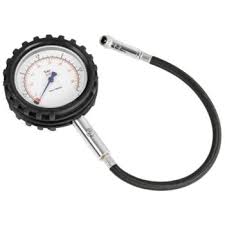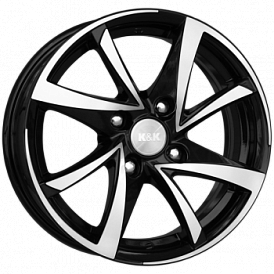How to choose engine oil
Choosing the right oil for a modern car is the key to the proper functioning of the engine and the preservation of all its technical characteristics throughout its entire life cycle. It is not enough to go to the market and buy the first available oil, you need to clearly know the recommendations of the car manufacturer, as well as the characteristics that you should pay attention to when choosing.
content
- The best motor oil manufacturers
- Types of motor oils
- Main criteria for choosing engine oil
- Engine Oil Tips

We recommend reading articles from an expert on oil filter selection and secrets selection of flushing oil for auto.
The best motor oil manufacturers
When choosing oil for your iron horse, preference should be given to products of well-known world-renowned chemical concerns:
-
Motul;
-
Castrol;
-
Mobil1;
-
Shell;
-
Eni;
-
BP;
-
Mannol;
-
Liqui Moly;
Recently, domestic manufacturers of motor oils, Lukoil, Tatneft, and Belarusian Naftan, also brought great success in terms of quality. It is not recommended to pour their products into high-tech Japanese and German engines, however, this oil is more than enough for the domestic auto industry, as well as for old foreign cars. This is evidenced by numerous reviews on automotive forums, as well as in various groups of social networks devoted to automotive topics.
Types of motor oils
Mineral oil

The most budget view resulting from the distillation of oil. To provide the necessary properties in the synthesis process, a large number of additives are added, stabilizing the characteristics of the oil and allowing it to extend its life. Due to the low temperature resistance, the presence of a large amount of sulfur and mediocre mechanical resistance, it is recommended to use only in older cars that are not demanding on the quality of the oil.
Virtues
-
Low cost;
-
A rich set of additives;
disadvantages
-
Low thermal stability;
-
Not suitable for modern cars;
-
Loses viscosity;
-
Additives work quickly and precipitate;
Virtues
-
Low cost;
-
A rich set of additives;
disadvantages
-
Low thermal stability;
-
Not suitable for modern cars;
-
Loses viscosity;
-
Additives work quickly and precipitate;
Semi-synthetic oil

It is a combination of high-quality synthetics with well-defined properties and basic mineral oil, which serves as a kind of container. At a price slightly higher than that of mineral water, it has better properties and is suitable for use with more or less fresh engines of cars and trucks, subject to the viscosity and tolerances recommended by the manufacturer.
Virtues
-
Inexpensive;
Low evaporation;
-
Balanced additive package;
-
Good temperature resistance;
-
The resource is much higher than that of mineral oil;
disadvantages
-
Quickly triggered;
-
Not suitable for modern cars;
-
When the replacement intervals are exceeded, it falls out in the form of oily sludge;
Virtues
-
Inexpensive;
Low evaporation;
-
Balanced additive package;
-
Good temperature resistance;
-
The resource is much higher than that of mineral oil;
disadvantages
-
Quickly triggered;
-
Not suitable for modern cars;
-
When the replacement intervals are exceeded, it falls out in the form of oily sludge;
Synthetic oil

The production of such oil is carried out by synthesis on high-tech equipment. The most high-quality and modern oil recommended for use in modern engines. High temperature resistance, low evaporation. High-quality package of detergents and anti-scorch additives.
Virtues
-
Excellent performance;
-
Resistance to oxidation and precipitation;
-
Preservation of viscosity even with long runs;
-
Long service life;
-
Balanced composition;
disadvantages
-
Is the most expensive;
-
High-mileage engines can “eat up” synthetic oil;
Virtues
-
Excellent performance;
-
Resistance to oxidation and precipitation;
-
Preservation of viscosity even with long runs;
-
Long service life;
-
Balanced composition;
disadvantages
-
Is the most expensive;
-
High-mileage engines can “eat up” synthetic oil;
Main criteria for choosing engine oil

In addition to the principle of manufacture, the following characteristics of motor oil are important.
SAE viscosity
The key parameter responsible for operational properties and thermal stability in certain conditions. The viscosity is indicated by two digits displayed through the Latin letter W.
-
The first digit shows the viscosity of the motor oil when it is cold scrolling. Synthetic oils of class 0w guarantee the preservation of the characteristics of the oil at temperatures down to -40 degrees, 5w - to minus 35 degrees, 10w - to minus 30, and so on;
-
The second number indicates the viscosity of a particular oil after the engine reaches operating temperature. The higher the number - the thicker the oil will be, reached a working condition.
Compliance API classification (American Petroleum Institute) and ACEA (European Automobile Manufacturers Association)
One or another index is issued after passing the relevant laboratory tests and determining the degree of suitability for operation with a specific type of engine. It is denoted as two letters.
-
The first letter indicates the category of the engine. The letter S makes it clear that the oil is recommended for use with a gasoline engine, C - with a diesel;
-
The second letter indicates the class of oil, and the farther from the first letters of the alphabet it is - the higher the operational characteristics of the oil. For example, diesel oil of category CE will be much higher in its parameters than that which is marked with CA;
The presence of additional tolerances specific manufacturers of cars
The above tolerances are universal, which can be judged on the suitability and quality of oil. At the same time, there are also narrowly specialized tolerances from particular manufacturers, to which it is necessary to pay the closest attention. You can highlight the following tolerances:
-
Mercedes Benz;
-
BMW Longlife (ll98, ll01, ll04);
-
Porsche;
-
Ferrari;
-
GM;
-
Volkswagen Audi Group;
Engine Oil Tips
-
Type, viscosity and tolerances are recommended to choose based on the recommendations of the car manufacturer;
-
Oil replacement under the conditions of Russian operation should be carried out at least once every 8–10 thousand kilometers (or after 150–180 hours of work, if the operation takes place in the mode of traffic jams). It has been repeatedly verified that it was after such a run that even a good oil almost completely worked;
-
Mixing different motor oils is not recommended, but allowed. One of the main requirements of the classification API and ACEA is the compatibility of the chemical composition with similar parameters and viscosity oils. This is done so that the user has the opportunity to add 0.5-1 liter of oil when the control lamp on the dashboard lights up without damage to the engine;
-
When operating modern engine oils, there is no need to replace the “summer” oil with “winter” oil. Much more important is the timely replacement and elimination of processing on one replacement;
In the next article we will reveal all the secrets of the correct timing belt selection for auto.
Attention! This material is the subjective opinion of the authors of the project and is not a guide to purchase.













